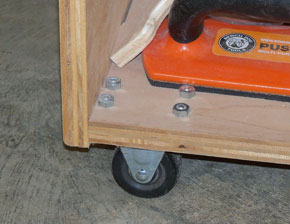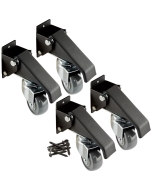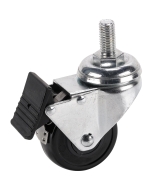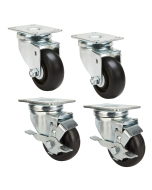Mobilizing Shop Built Tools
Incorporating casters into the design of your tool supports and workbenches ensures that your heavier tools will remain stable and mobile.
In my shop, I have an older drill press that is too tall to be used on a benchtop, and too short for a floor model, so I built a short cabinet for it some time back.
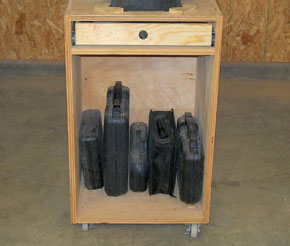
This simple box cabinet has no feet or toe kick, so making it mobile is no more complicated than adding four wheels to the bottom. The drill press never sees any real lateral force being applied, so there is no need to worry too much about keeping it still as it is being used. Simple swivel casters with locks can be used effectively here.
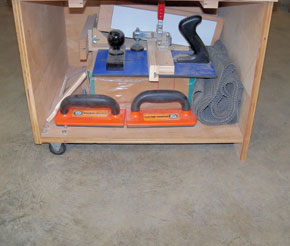
Tools like your router table, on the other hand, do need to resist moving when being used. As you are feeding a board through, especially when using featherboards, the wheels need to hold it in place. In cases like this, I prefer to mount two fixed casters under one side, and have feet on the opposite end. This allows my router table to be lifted from one side and rolled around much like a hand truck. Lifting one side reduces the effort of lifting, but having solid feet on the floor resists moving during use. In these cases, I prefer to bolt the casters through the base since the weight will be acting on the casters at an angle when moving.
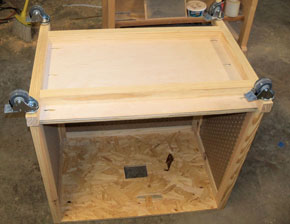
Typically, it is much better to design your shop built cabinet from the outset knowing how casters will be incorporated. This downdraft sanding center I am building will need a wide stance so I added a base frame with the casters well outside the cabinet. Chances are however, that you already have shop cabinets without them, and a purchased router table or the like that needs wheels. Fortunately, there are a number of ways to work with preexisting cabinets or boxes. Casters can be bought with mounting plates that can be screwed or bolted to a flat bottom. Others come with threaded studs for mounting. There are even caster brackets that provide a solid mounting point for boxes where the bottom is not flush with the sides.
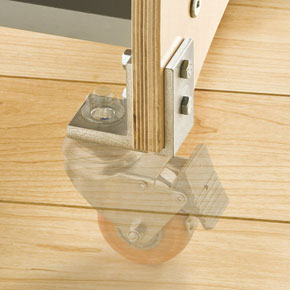
Being able to quickly and easily move "stationary" tools out of the way, or rearrange your shop to suit a project will make the most of your shop space and let you spend more time working. Look for creative ways to make the shop tools that you built go where you want them to.
Keep the inspiration coming!
Subscribe to our newsletter for more woodworking tips and tricks
